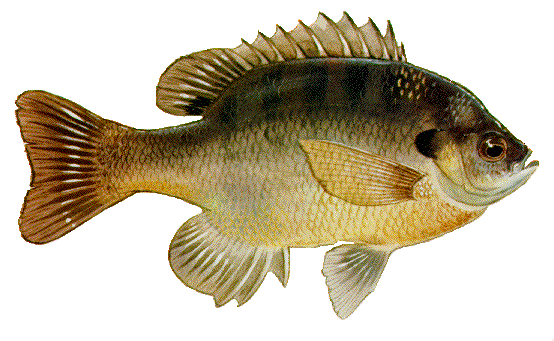Research done using: http://www.iowadnr.gov/fish/iafish/ylp-fish.html, http://animaldiversity.ummz.umich.edu/site/accounts/pictures/Perca_flavescens.html, http://www.stoneflysociety.org/fishinfo/yellowperch.htm, and http://www.dnr.state.md.us/fisheries/fishfacts/yellowperch.asp
Yellow perch are very different from sunfish. They are longer and skinner comparatively. There are two main types of perch, yellow and white. Both are found in freshwater, but I have never caught a white perch, only yellow. Yellow perch are commonly found in freshwater reservoirs and calm waters across the east coast. They appear yellow and sometimes green with several black or dark stripes across their backs. The fins are anywhere from red to orange or yellow to white.

Also, their dorsal (top) fin is completely split into two sections; the first spiky and the second, smooth. Few freshwater fish have this, but it is not uncommon in saltwater. Yellow perch can grow to up to eighteen inches in length, most adults reach between a foot and a foot and a half. Male yellow perch migrate to shallow areas where they wait for the females. The females can lay between 5,000 and 109,000 eggs. They lay their eggs in strands that are delicately attach to organic debris or some type of structure. Numerous males fertilize the eggs and in two to three weeks the eggs hatch. The larvae feed in the shallows until they can manage to get into deeper water where they are safer. After one to three years for males and two to three years for females, they can go back to the shallows and annual lay eggs and fertilize. The spawning areas change a lot with the receding and expanding of the water's shores. Yellow perch have been known to live up to thirteen years.
Yellow perch eat invertebrates, zooplankton, snails, insects on the surface of the water, and the occasional small fish. They can be caught in freshwater during the warm, bright hours of the summer with live or artificial baits. They will eat the commonly used blood worm, as well as fake minnows. Usually they are caught on fly rods because the bait is a bug or insect skimming the water's surface, where the yellow perch often feed.





